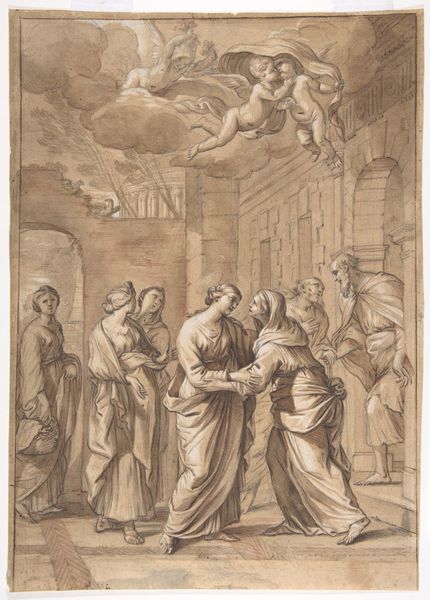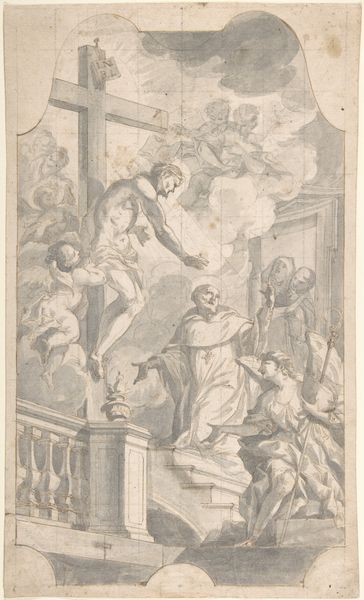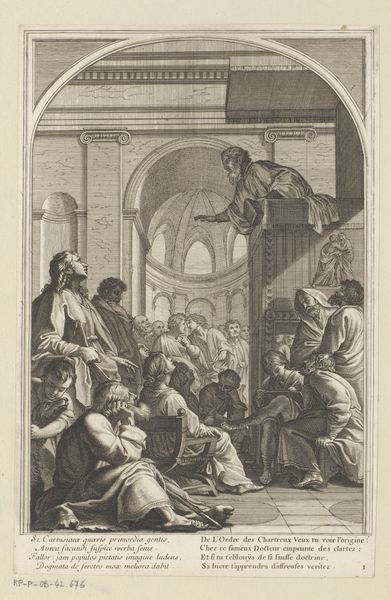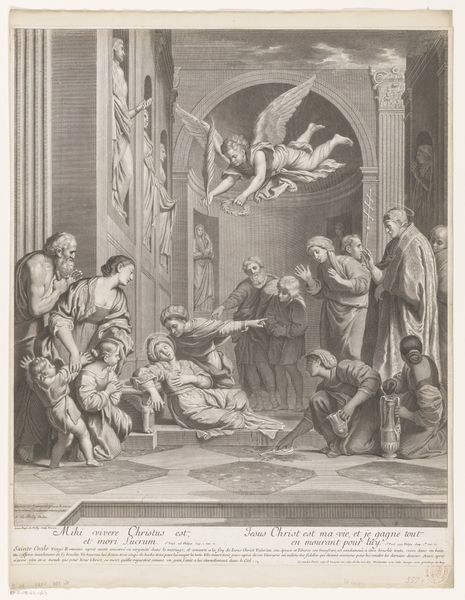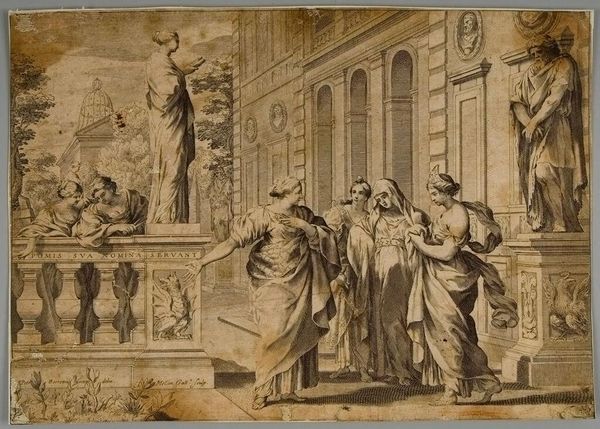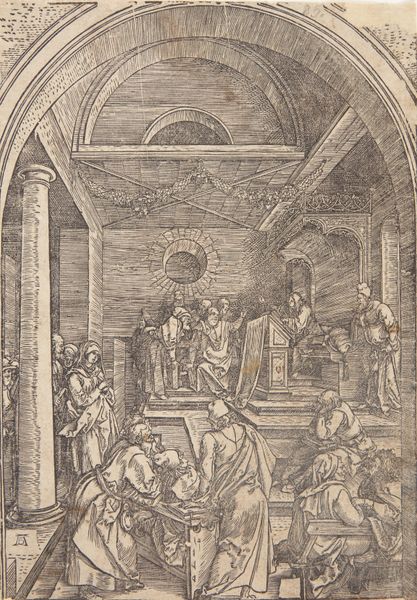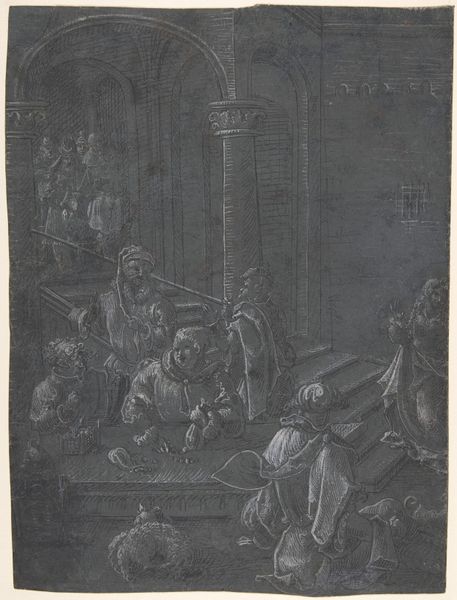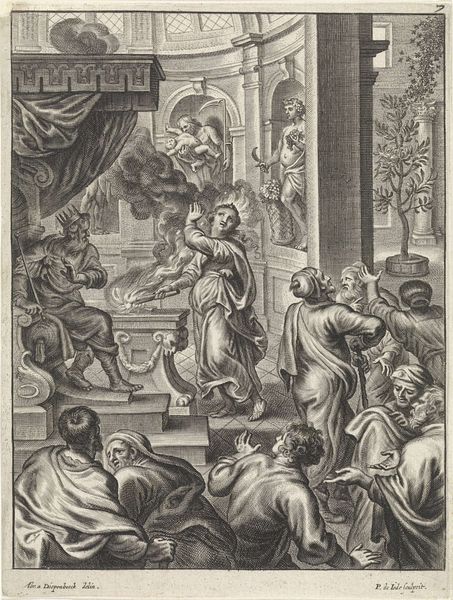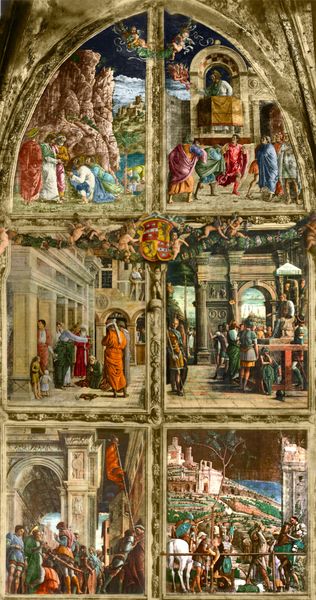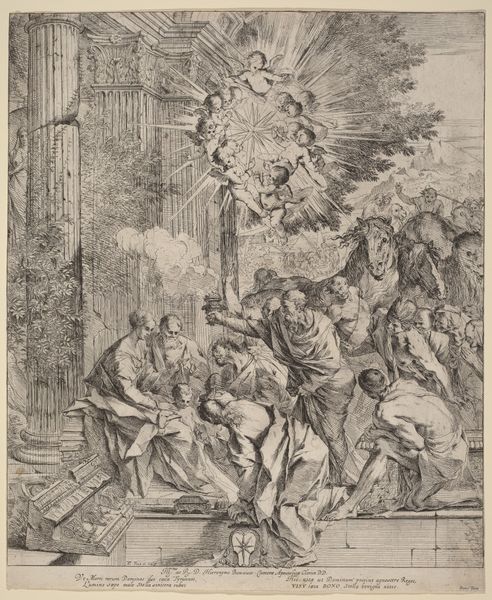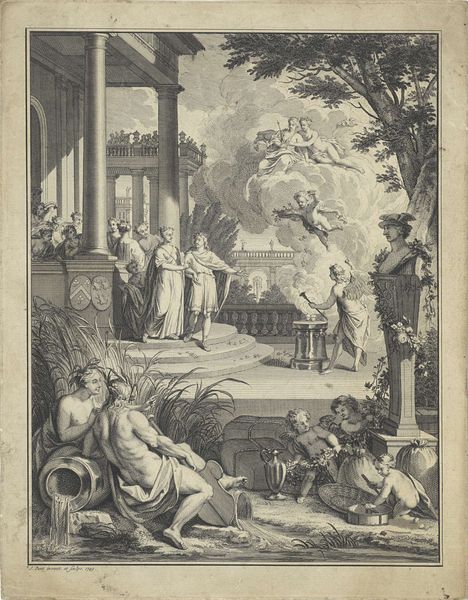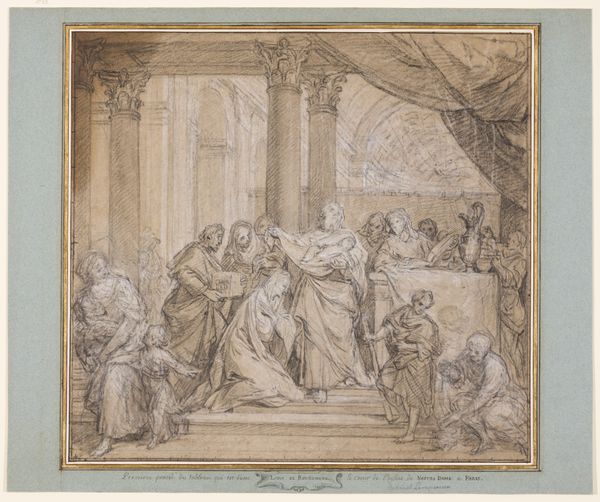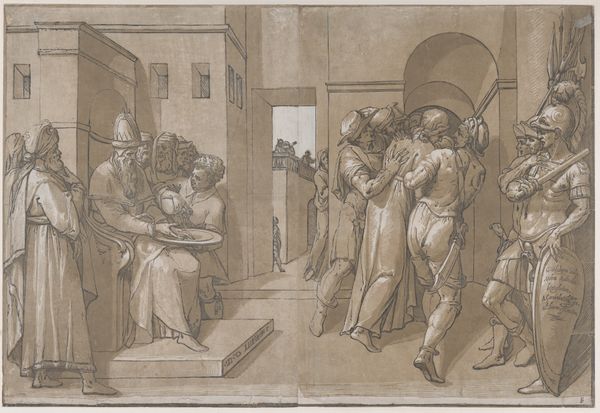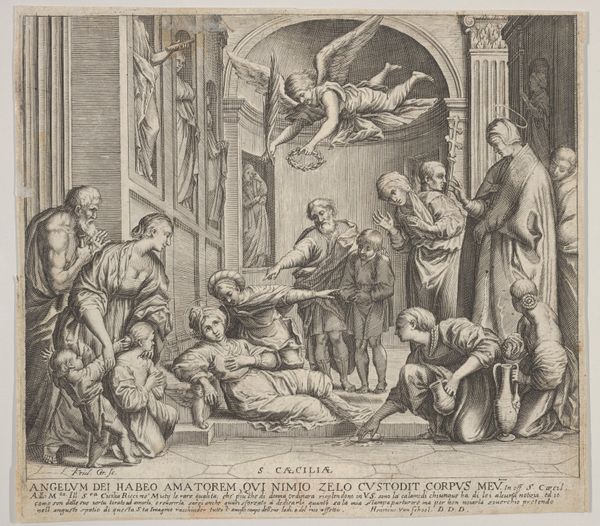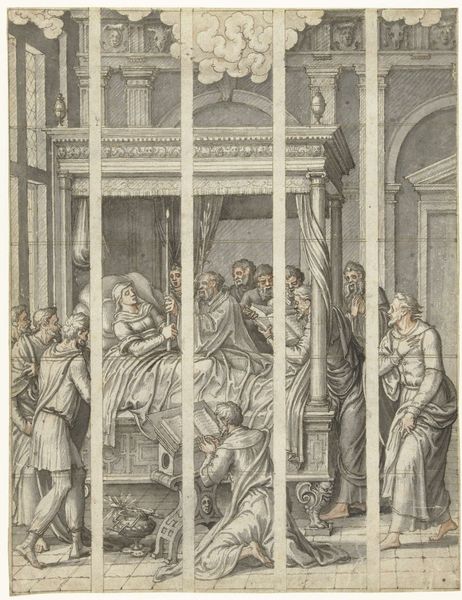
painting, oil-paint, wood
#
baroque
#
dutch-golden-age
#
painting
#
oil-paint
#
sculpture
#
landscape
#
figuration
#
dark-toned
#
wood
#
genre-painting
#
history-painting
#
realism
Dimensions: 31 cm (height) x 36.5 cm (width) (Netto)
Editor: This is “Christ Healing at the Pool of Bethesda,” painted in 1637 by Dirck van Delen. The oil on wood panel depicts a scene bustling with figures inside what appears to be an ornate building with a dramatically lit entrance where we see an angel. It definitely grabs your attention with its architectural elements and the interplay of light and shadow, but I’m curious… what do you see in this piece? Curator: Immediately, I’m struck by the architectural setting; these carefully rendered columns and arches speak to a human-built order, juxtaposed with the divine intervention taking place. Do you notice how the light emanates not from a natural source, but from the figure in the sky? That’s not just light; it’s revelation, isn’t it? Light as a symbol is key here, especially with its associations of knowledge and understanding in the Baroque period. Editor: Absolutely, it’s a theatrical contrast. But there are so many figures. What's your reading of them? Curator: Think of it as a snapshot of human suffering and hope. The figures in the foreground are, in essence, visual representations of human frailty and vulnerability. They embody the universal need for healing, both physical and spiritual. Van Delen is not merely depicting a biblical story; he's inviting us to consider the enduring power of faith and compassion. The story told here speaks of access, doesn't it, and to those on the periphery, excluded for so long. Editor: It's interesting how you read the architectural elements as both a stage for the miraculous and also an active participant in shaping meaning. Curator: Indeed! These structures become active participants in delivering messages, creating dialogues between earthly existence and heavenly intervention. And how these elements were used consistently across cultures can demonstrate humanity's shared desire to express spirituality and create communal spaces that are not always tangible, which still holds great meaning today. Editor: I never thought of it quite that way, focusing so much on the buildings as symbolic structures beyond their literal depiction. Thanks!
Comments
No comments
Be the first to comment and join the conversation on the ultimate creative platform.
